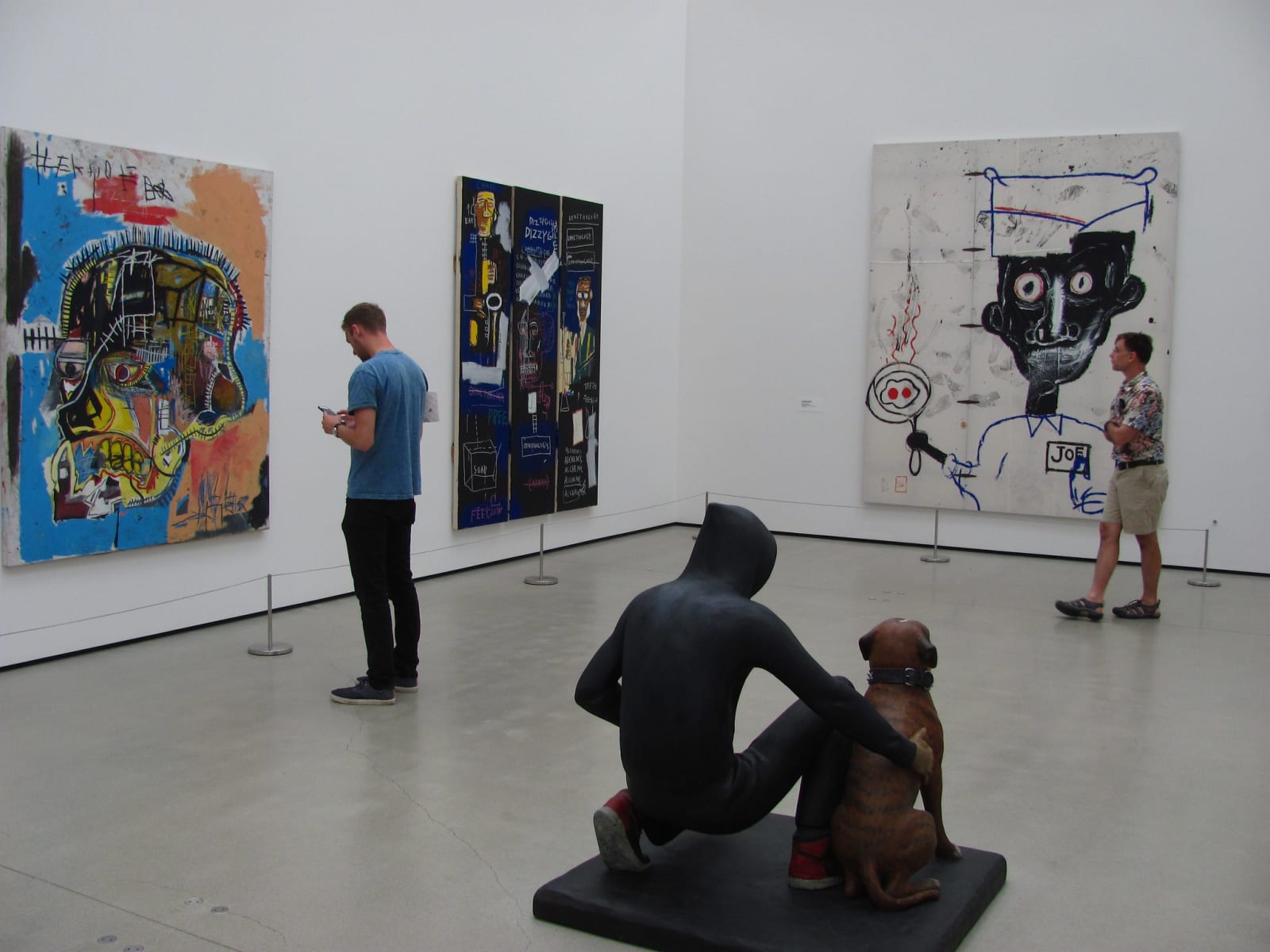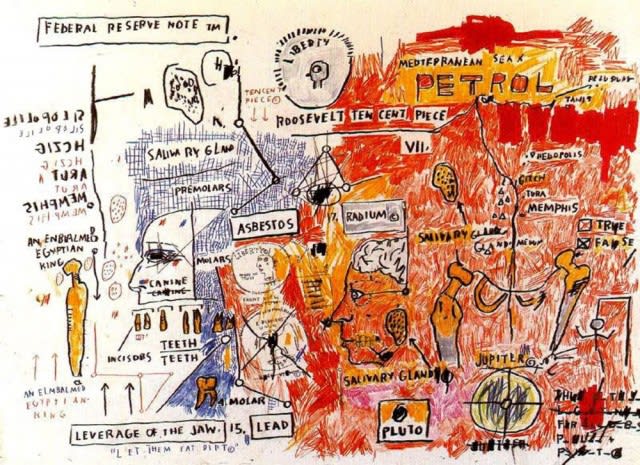The streets of New York became a canvas for Jean-Michel Basquiat, the subways a canvas for Keith Haring. Both artists had recognition in underground art venues and clubs, but did not gain immediate entrance to established galleries and museums.
The art, and club, scene in the 1980s was wild and frenzied. Haring and Basquiat both worked and partied with abandon and, as it turned out, the streets and subways gave them access to wide audiences. Their art eventually crossed the threshold from street art to high art, paving the way for graffiti artists who came after them to gain acceptance in galleries and museums around the world.
Jean-Michel Basquiat
Jean-Michel Basquiat was born and raised in Brooklyn. He left home at age seventeen and lived and worked on the streets of New York, selling postcards of his artwork to earn money and couch-surfing to put a roof over his head. Basquiat often gave his friends pieces of artwork to show appreciation for their hospitality or in trade for favors.
Many of these works were cherished and saved by their recipients and have been collected for an exhibit called Our Friend, Jean at the Bishop Gallery in Brooklyn.
Writer Robert Becker was one of the recipients of Basquiat’s work. He loaned one of the drawings that Basquiat gave him for inclusion in the exhibit. In a recent article, Becker described the circumstances surrounding the gift that he kept for nearly four decades.
“My portrait,” Becker wrote, “drawn in pencil and oil stick, tagged “Always Drunk, Handsome young Robert Becker,” was finished off with a half dozen of his scrawled signatures and a most ironic caption along the bottom, “Trial Drawing No Value.”
I’d met Jean-Michel in the late ‘70s in the East Village, and saw a lot of him when I worked at the Strand Bookstore and Interview Magazine. His impulse to give me a drawing wasn’t purely altruistic; I’d loaned him a shirt one Friday night and he’d decided to keep it. I remember his pleasure in making the portrait — we were at the Warhol Factory and both very hungover — and his quick, clean facility, complete focus, his glee in poking fun, and how he nailed my appearance.
In 1982 he was loaded up with ideas and confidence. His studios and the people around him were about to get much fancier, but the tremendous production, the one-man art mill churning out work night and day, wouldn’t fall silent until his death in 1988.”
On May 18, 2017, at a Sotheby’s auction, a 1982 painting by Basquiat depicting a black skull with red and black rivulets (Untitled) set a new record high for an American artist at auction, selling for $110.5 million.
Keith Haring
Keith Haring’s deceptively simple work contains commentary about war, AIDS, drugs and other social issues that Haring felt strongly about. His cartoon-like approach gave his work a large following and helped to establish him as a serious street-to-gallery artist.
Haring died less than two years after Basquiat. In honor of his friend, Haring painted Pile of Crowns for Jean-Michel Basquiat, using the crown symbol that Basquiat often used in his works. Keith Haring/Jean-Michel Basquiat: Crossing Lines will be on display at the National Gallery Victoria through April 11, 2020.
The Works of Jean-Michel Basquiat and Keith Haring at Surovek Gallery
Please contact us if you would like more information about the works of Jean-Michel Basquiat, Keith Haring or any of the other fine artists whose work is available at Surovek Gallery.
References:
Lindy Percival. Keith Haring and Jean-Michel Basquiat: art stars who shone too briefly. The Sydney Morning Herald. November 22, 2019.
Robert Becker. Remembering Basquiat Through the Keepsakes He Gave Intimates. Hyperallergic. February 20, 2020.
Meg Watson. ‘We were all a little bit punk’: Haring, Basquiat and the art that defined 80s New York. The Guardian. February 23, 2020.




